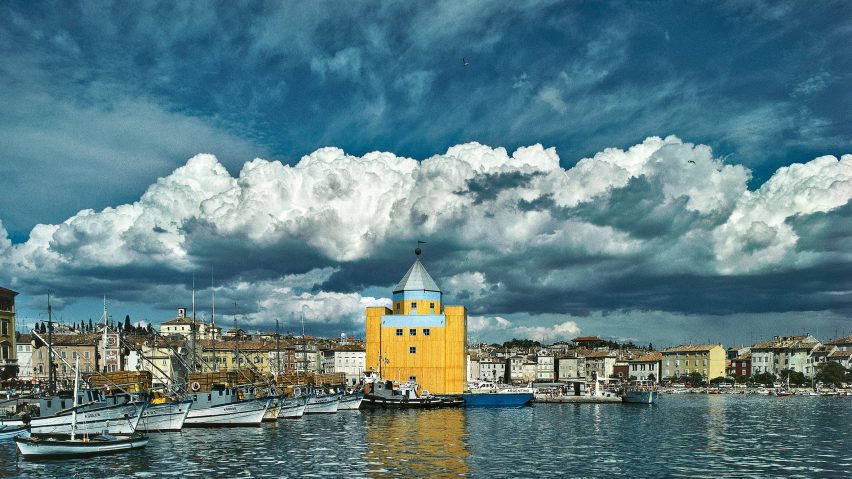
Ten key Aldo Rossi projects that showcase the scope of his work
A new retrospective of postmodernist architect Aldo Rossi's work has recently opened at Rome's MAXXI museum. Its curator Alberto Ferlenga picks ten designs that demonstrate the scope of Rossi's work and how it is still relevant today.
Named Aldo Rossi: The Architect and the Cities, the exhibition presents a wide range of work by the Pritzker Architecture Prize-winning Italian architect who is known for his work on architectural theory, as well as drawing and product design.
Exhibition features hundreds of photos
It showcases over 800 drawings, photographs, documents and models by the postmodernist architect.
"Aldo Rossi was the Italian architect who, more than others, set himself a theme: that of the reconstruction of an architectural culture suitable for an epochal task such as that, in Italy, in the 1950s, of the material reconstruction of the country after the war," Ferlenga told Dezeen.
"In a moment of transition in which all the previous parameters were changing, he understood that the culture available to Italian architects was not enough and had to be renewed."
Rossi's work had an effect that went beyond national borders, Ferlenga argues and is still relevant today.
"Now, are we not facing a moment of epochal transition like that of the postwar period?" he said.
"Aren't environmental issues new parameters from which to adapt the culture of architects today? And don't cities, which have grown out of all proportion but no longer read, continue to be the most important terrain for action for an architect?"
Architects today face the same responsibilities as the young Rossi
The curator wanted to give a vision of Rossi as not just an architect and poet but a "responsible intellectual."
"I believe that architects today face the same responsibilities as the young Rossi and his colleagues at the end of the war, and the same tasks of reconstructing a culture and knowledge useful for reviewing the relationships between architecture, the environment that surrounds it and the life of those who use his buildings," he said.
"In short, I wanted to underline the 'usefulness' of Rossi's thought for us today and not just his poetry."
Below, Ferlenga picks ten projects from the exhibition:
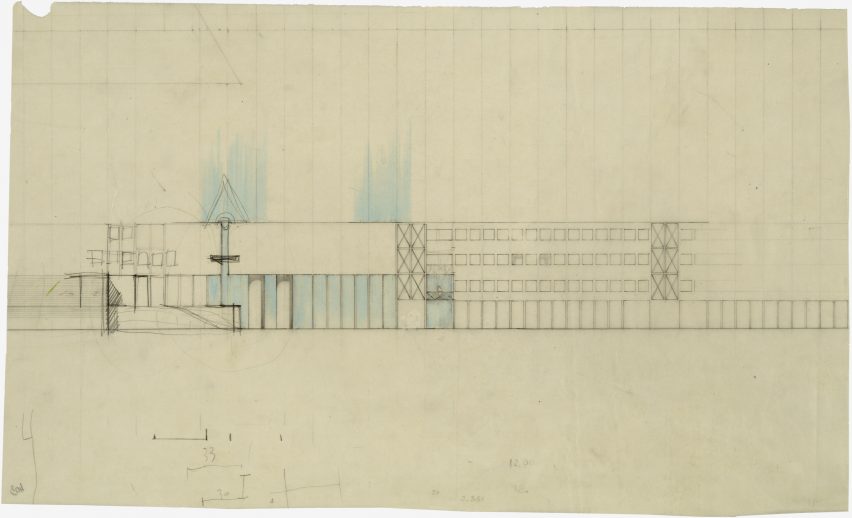
The Gallaratese Quarter, Milan, 1969
This is the first important work by Rossi, an expression of his initial architectural aptitude – neo-rationalist, purist and realist at the same time.
The iconic white building, lifted up from the ground by column-like walls and cylinders completes the colourful Monte Amiata district designed by Carlo Aymonino in the Milanese suburbs.
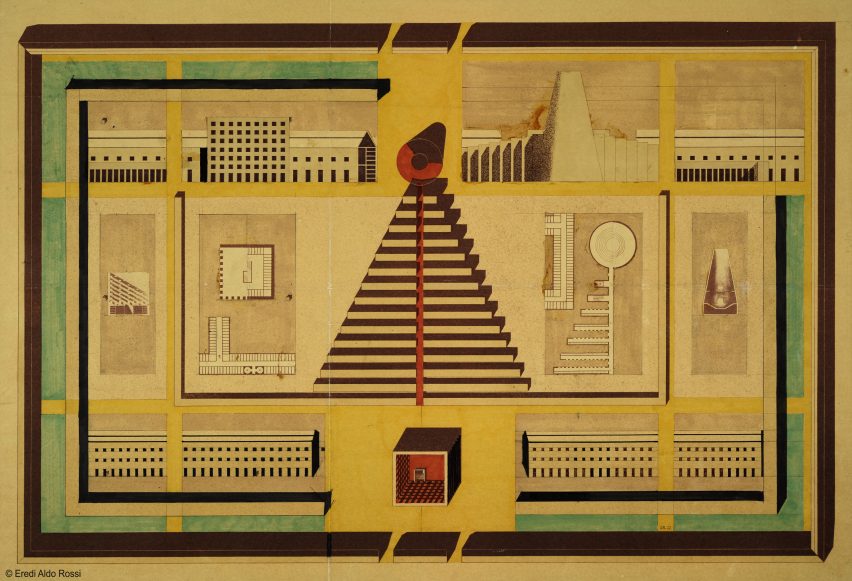
San Cataldo Cemetery, Modena, 1971
San Cataldo Cemetery is perhaps the most significant work by Rossi. Still incomplete today, Rossi's extension is confronted with the historic cemetery and with the suburbs – with the life of the cities and with that of the men.
A work of "late youth", as Rossi called it, it is distinguished by the blue roofs and the deep red of its central building.
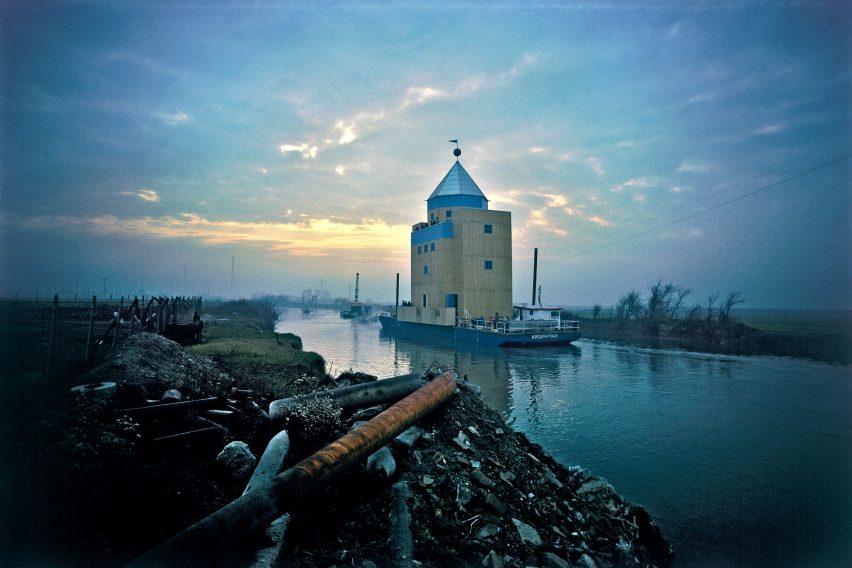
The Teatro del Mondo, Venice, 1980
Moored at the Punta della Dogana in Venice, the floating Teatro del Mondo (above and top) had the lightness of a children's game and the depth of an architecture that knows how to combine historical forms of the city.
Built for the biennale, the building crossed the Adriatic Sea before returning to Venice and being definitively dismantled. The work marks the starting point of the architect's international fortune.
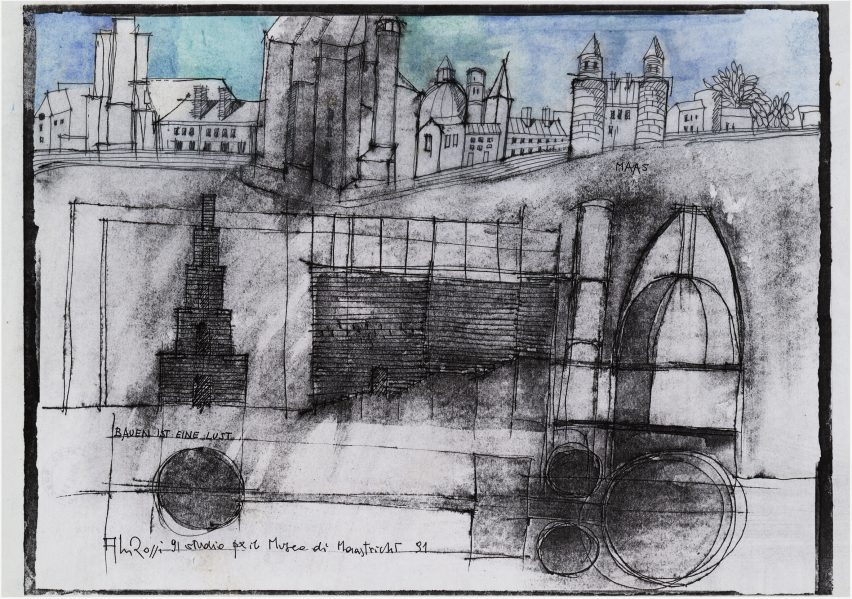
Bonnefantemuseum, Maastricht, 1980
Like the theatre, the museum is also a recurring theme in Rossi's work, where culture is characterised by a strong attention to the relationship between architecture and history.
The Bonnefantemuseum in Maastricht gave Rossi the opportunity to define an architectural theme that often appears in his drawings, that of the tower. At the same time, he also used silos and a dome for the museum that became an important symbol of the city.
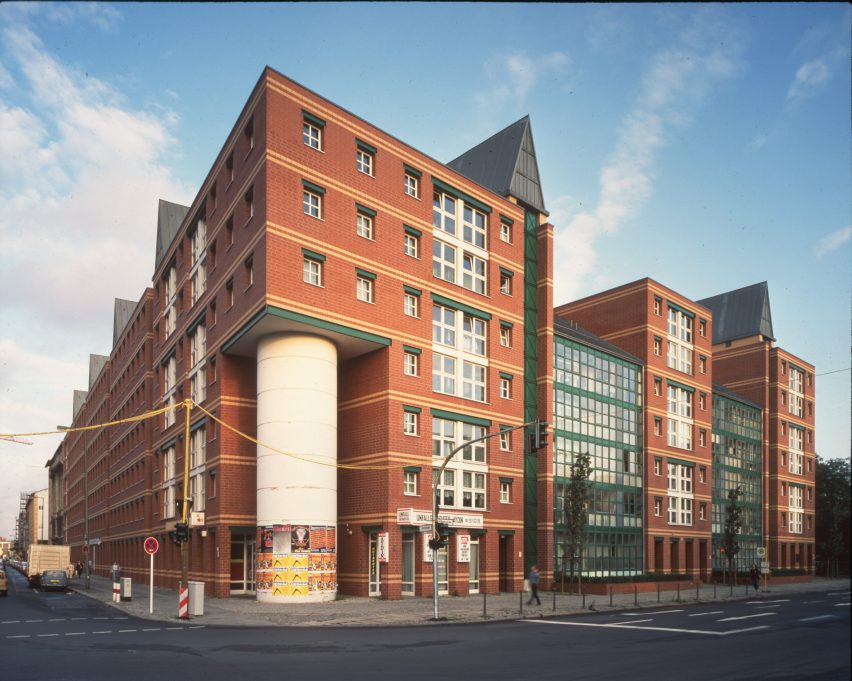
House in Friedrichstadt, Berlin, 1981
The building is the first of Rossi's buildings in Berlin, where he would build numerous other projects, which represents for him one of the most important urban references.
The apartment block is characterised by the use of red brick and the white corner column that is the real "signature" of the Milanese architect.
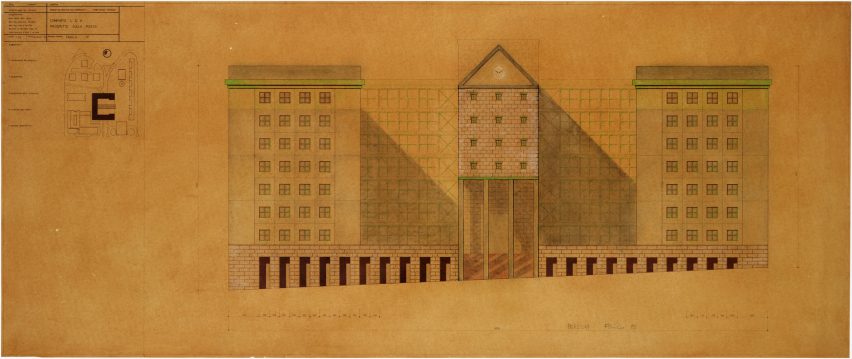
Piazza Nuova, Perugia, 1982
An urban piazza built, but not completed, in one of the most famous Italian historical centres, this project demonstrates the urban themes developed by Rossi.
Here he aims to constitute a new contemporary city, relating the historical tradition of the city of Perugia with the needs of contemporary life.
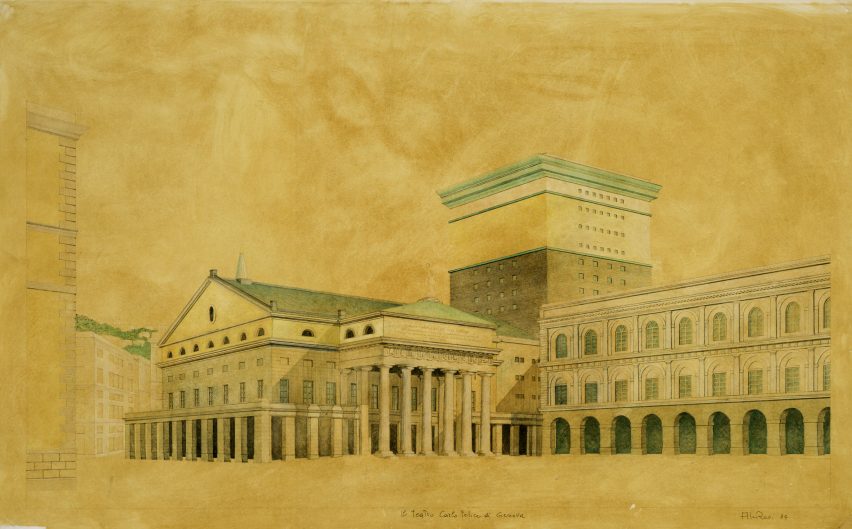
Reconstruction of Teatro Carlo Felice, Genoa, 1983
The Genoa theatre is an expression of Rossi's interest in the theme of theatre that runs through all of his work.
Rossi rebuilt the theatre, which was destroyed in world war two, to enhance its urban role. Its scenic tower has become an important landmark in the profile of the city and its interior extends the spaces of the city of Genoa into the atrium and the foyer.
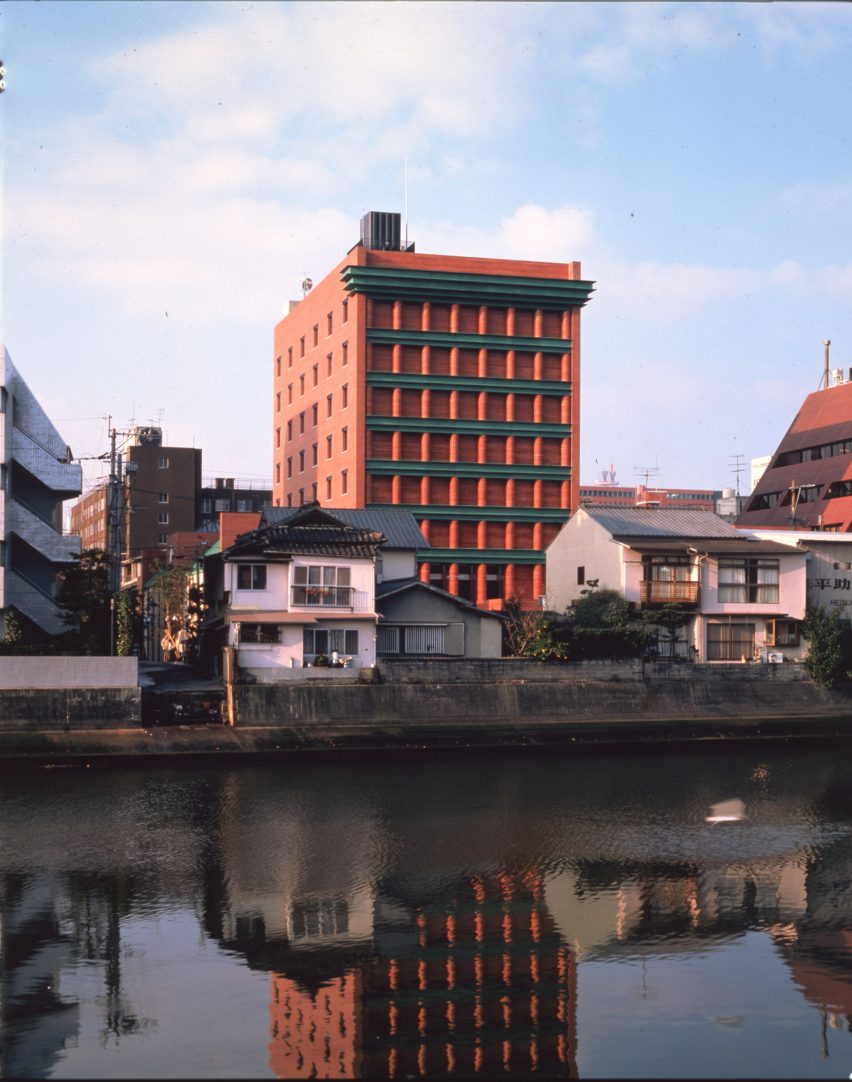
The Il Palazzo hotel, Fukuoka, 1987
The first Japanese project by Rossi, followed later by many others, the hotel stands along the river and is characterised by a blind facade built in red Indian stone.
Apparently isolated, it created a small fragment of urban fabric at its feet. The building is the starting point for Rossi's personal discovery of Japan, which would be echoed in his writings and other projects.
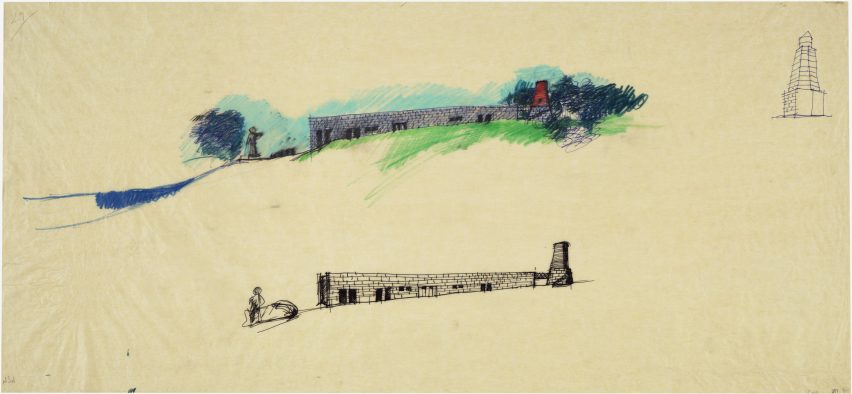
Vassivière Museum, Beaumont-du-Lac, 1988
In this small contemporary art gallery built on an island in the Limousine region, the architect uses some of his recurring themes including the lighthouse.
The very simple building interprets its extraordinary location in an amazing way.
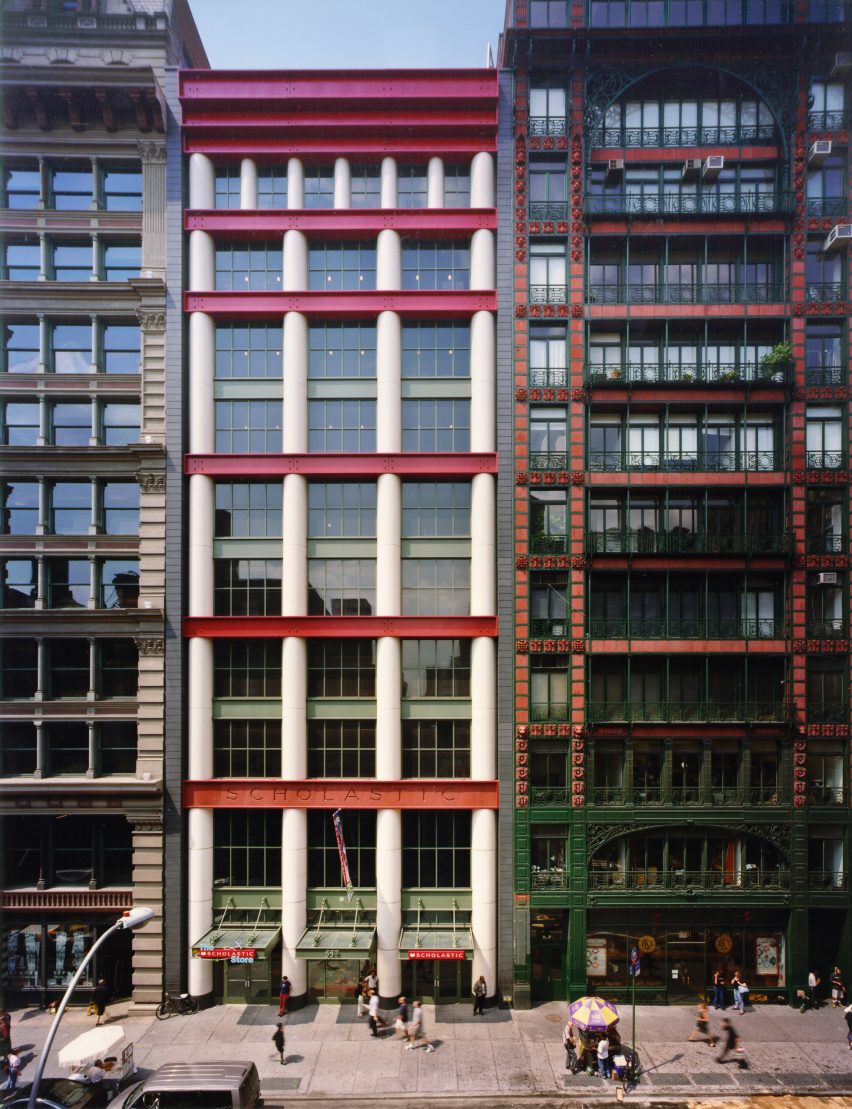
Scholastic building, New York, 1997
Among Rossi's latest projects, the Scholastic building along Broadway, is a mature demonstration of the very close relationship between Rossi and the city of New York.
It is a singular and typical construction, that builds on the theme of the curtained building and the use of typical materials of the city such as metal and glass. It represents the final act of a very strong sentimental and professional relationship with the American world.
Aldo Rossi: The Architect and the Cities is on view at the National Museum of 21st Century Arts (MAXXI) in Rome from 10 March 2020 to 17 October 2021. See Dezeen Events Guide for an up-to-date list of architecture and design events taking place around the world.